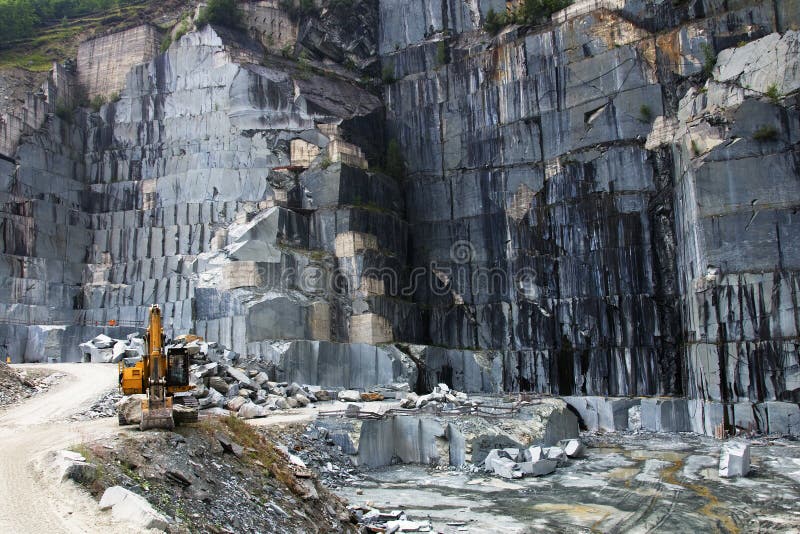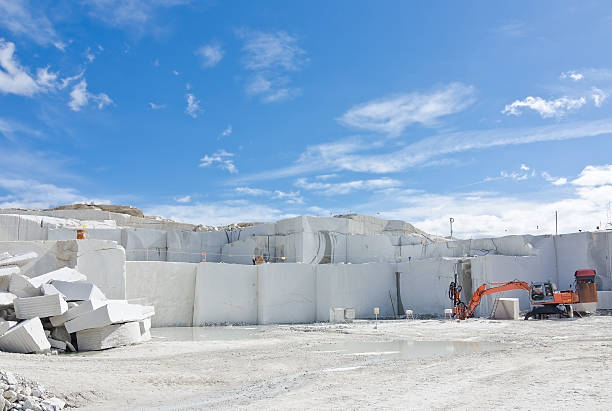Introducing the Mysteries of Granite Quarrying: Where Strength and Sophistication Meet
The globe of granite quarrying is a world where the raw strength of nature assembles with human virtuosity to create structures that stand the test of time with an air of sophistication. From the depths of quarries to the careful sprucing up in workshops, the procedure of transforming granite into architectural wonders is an intricate dancing of tradition and development. As we peer into the depths of this old craft, we begin to uncover the concealed details that form the really essence of our built environment.
The Origins of Granite Quarrying
In the annals of architectural history, the beginnings of granite quarrying are shrouded in a tapestry of old workmanship and geological wonders. Going back to old Egypt and Mesopotamia, the removal of granite from quarries noted the start of a trip that would at some point bring about the production of several of the world's most famous structures.
Granite quarrying's roots can be traced to the competent artisans who acknowledged the stone's sturdiness and visual allure. With a mix of primitive devices and sheer determination, these early quarry employees uncovered granite blocks that would become the structure blocks of human beings.
As people progressed, so did the methods of quarrying granite. The Romans, renowned for their engineering prowess, developed innovative approaches for drawing out granite to build monuments, holy places, and roads that stood the test of time.
The heritage of these old quarrying methods remains to form contemporary architecture, with granite continuing to be an icon of stamina and beauty in construction tasks around the globe. (granite quarries in south africa)
Devices of the Quarrying Trade
The evolution of granite quarrying strategies from ancient civilizations to modern-day times highlights the important role played by the devices of the quarrying profession in shaping the sector's techniques. In ancient times, quarrying tools were fundamental, commonly including knives, hammers, and wedges made from materials like bronze or iron. These devices needed substantial workforce and time to extract granite obstructs from quarries.

Furthermore, the intro of pneumatically-driven devices and high-powered equipment has actually dramatically lowered the physical labor called for in quarrying procedures, improving employee safety and security and performance. As the quarrying sector proceeds to introduce, the devices of the profession remain at the leading edge of driving progression and forming the future of granite removal.
Extracting Blocks of Granite
Utilizing explanation precision machinery and progressed methods, the removal of granite blocks from quarries has become an innovative procedure in the contemporary quarrying market. The initial action entails determining the place and size of the granite down payment to establish one of the most effective extraction approach. When a suitable website is picked, the extraction procedure starts with the drilling of holes for the positioning of dynamites. Controlled blowing up methods are then used to disintegrate the granite into workable areas.

Polishing and Finishing Strategies
To attain a flawless surface area on granite blocks, experienced craftsmens use a series of careful sprucing up and completing strategies. After the initial extraction and shaping procedures, the granite obstructs undergo a complete sprucing up phase to improve their all-natural beauty and sturdiness.
Along with polishing, ending up techniques are applied to more improve the granite's appearance. These methods might consist of flaming, sharpening, or brushing, each offering distinct structures and coatings to match different aesthetic preferences. Flaming, for example, includes exposing the granite surface to high temperatures to create a harsh, textured coating, suitable for outside applications where slip-resistance is crucial. Developing, on the various other hand, supplies a matte coating that is smooth to the touch, excellent for indoor countertops and flooring. By thoroughly choosing and applying these polishing and completing methods, artisans can transform raw granite blocks into splendid pieces that showcase both stamina and click beauty.

Ecological Effect and Sustainability
With the expanding emphasis on ecological consciousness in the sector, granite quarrying methods are progressively looked at for their effect on natural deposits and long-lasting sustainability. Quarrying for granite can have significant environmental effects. The extraction process usually includes using hefty machinery, dynamites, and big amounts of water, causing habitat devastation, dirt erosion, and water contamination. In addition, the transportation of granite from quarries to processing facilities creates carbon exhausts, further contributing to ecological destruction. granite quarries in south africa.
To mitigate these impacts and guarantee sustainability in granite quarrying, market stakeholders are embracing different procedures. Applying innovative modern technologies to reduce energy consumption and water use, redeeming quarried land for eco-friendly restoration, and advertising liable sourcing techniques are some strategies being go now utilized. Moreover, accreditations such as the Woodland Stewardship Council (FSC) and the Leadership in Energy and Environmental Design (LEED) help customers recognize ecologically friendly granite products.
Verdict
In final thought, granite quarrying is a process that calls for specialized devices and strategies to essence blocks of granite and polish them to a high degree of finish. While the ecological effect of quarrying can be substantial, efforts are being made to enhance sustainability practices in the sector. In general, granite quarrying is a fragile balance in between utilizing the toughness and sophistication of this all-natural stone while decreasing its influence on the environment.
Comments on “Opening All-natural Prizes: Granite Quarries in South Africa Unveiled”